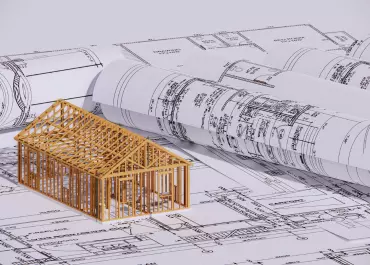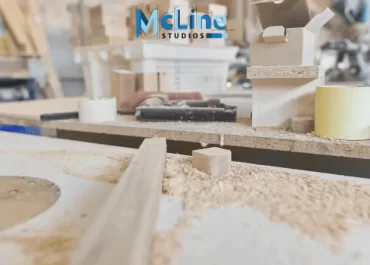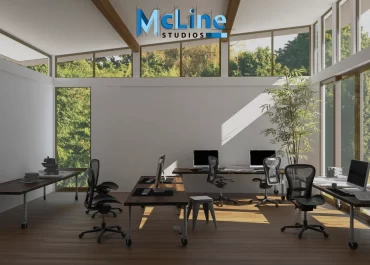Millwork shop drawings are an essential component of any construction project involving custom woodwork, cabinetry, or architectural millwork. These detailed technical drawings serve as a blueprint for fabrication, ensuring that the millwork components are accurately constructed and assembled to meet the project’s specifications.
These drawings may include precise measurements, material specifications, assembly details, and other technical information needed to produce millwork elements accurately. They also depict the design intent, showing how each component fits within the overall architectural context and meets the client’s requirements.
In this blog post, we’ll dive deep into the world of millwork shop drawings, exploring what they are, why they’re important, and how to excel in creating them.
What Are Millwork Shop Drawings?
Millwork shop drawings are detailed diagrams or plans that provide instructions for the fabrication and installation of custom millwork components, such as cabinets, doors, windows, and moldings. These drawings are created by millwork draftspersons or designers and serve as a crucial communication tool between architects, designers, contractors, and manufacturers.

Importance of Millwork Shop Drawings
- Precision In Work: Millwork shop drawings serve as a precise roadmap for creating customized millwork. They specify exact dimensions, materials, finishes, and assembly methods, ensuring that every piece fits seamlessly within the overall design.
- Ease Of Communication: These drawings act as a common language between architects, designers, contractors, and millwork shops. They convey design intent and technical specifications, reducing the chances of miscommunication or errors.
- Cost Efficiency: Accurate millwork shop drawings help streamline the manufacturing process. When there are no ambiguities or guesswork, material waste is minimized, and labor costs are reduced.
- Quality Assurance: Millwork shop drawings enable thorough quality checks before production begins. This ensures that the final product meets the client’s expectations and industry standards.
How To Create Millwork Drawings?
Creating millwork shop drawings involves several steps to ensure accuracy in conveying the design intent to the millwork fabricator. Here’s a general outline of the process:
- Review Architectural Drawings: It is always recommended to begin by reviewing the architectural drawings, including floor plans, elevations, and sections. These drawings provide the necessary context for understanding the project requirements and incorporating millwork elements into the overall design.
- Understand Design Intent: Communicate with the architect, interior designer, or client to clarify the design intent for the millwork elements. This may involve discussions about materials, finishes, dimensions, hardware, and other details.
- Take Measurements: If not provided in the architectural drawings, take precise measurements of the spaces where the millwork will be installed. Accurate measurements are essential for creating detailed shop drawings.
- Draft Initial Sketches: Try to begin by sketching preliminary designs based on the architectural drawings and design discussions. These sketches should capture the overall layout and proportions of the millwork elements.
- Digitize Sketches: Transfer the initial sketches into digital format using CAD (Computer-Aided Design) software. This allows for precise scaling, dimensioning, and editing of the drawings.
- Create Detailed Drawings: Develop detailed drawings for each millwork component, including cabinetry, shelves, countertops, moldings, and other elements. Pay attention to dimensions, joinery details, material specifications, and any special instructions provided by the client.
- Include Hardware and Accessories: Specify the hardware, such as hinges, handles, knobs, drawer slides, and other accessories required for the millwork. It is always recommended to ensure compatibility with the chosen materials and design aesthetic.
- Incorporate Construction Details: Add construction details to the drawings, including assembly methods, joinery techniques, edge profiles, and any custom fabrication requirements. This information helps the fabricator understand how to construct the millwork accurately.
- Check for Compliance: Review the shop drawings to ensure compliance with building codes, industry standards, and project specifications. Verify that the dimensions, materials, finishes, and hardware meet the required standards.
- Revise and Finalize: Incorporate feedback from the client, architect, or other stakeholders and make any necessary revisions to the shop drawings. Once finalized, ensure that all drawings are properly labeled and organized for easy reference.
Best Practices for Millwork Shop Drawings

- Understand the Project Requirements: Before beginning the shop drawings, thoroughly review the architectural plans, specifications, and any other relevant documents to understand the project requirements, including dimensions, materials, finishes, and installation details.
- Use CAD Software: Utilize computer-aided design (CAD) software to create precise and detailed drawings. CAD software allows for accurate measurements, scalable drawings, and easy revisions.
- Follow Industry Standards: Adhere to industry standards such as those set by the Architectural Woodwork Institute (AWI) or other relevant organizations. These standards provide guidelines for detailing, dimensioning, and quality expectations.
- Include Comprehensive Detailing: Ensure that the shop drawings include comprehensive detailing of all components, including joinery, hardware, profiles, and finishes. Pay close attention to critical areas such as corners, joints, and intersections.
- Provide Clear Annotations and Notes: Include clear annotations, dimensions, and notes to communicate important information to fabricators, installers, and other stakeholders. Use standard symbols and conventions for clarity and consistency.
The Final Thoughts
In short, millwork shop drawings are crucial for crafting custom architectural pieces. They help us communicate, make sure everything is spot-on, and make the whole production process smoother. These drawings are like blueprints that precisely outline every detail, from measurements to materials, so craftsmen can bring designs to life perfectly.
It’s all about teamwork and paying attention to the nitty-gritty details throughout the drafting process. This ensures that the final drawings match the project’s vision and needs perfectly. Ultimately, millwork shop drawings are the backbone of turning ideas into real, beautiful architectural elements that not only look great but also work seamlessly in the space.




